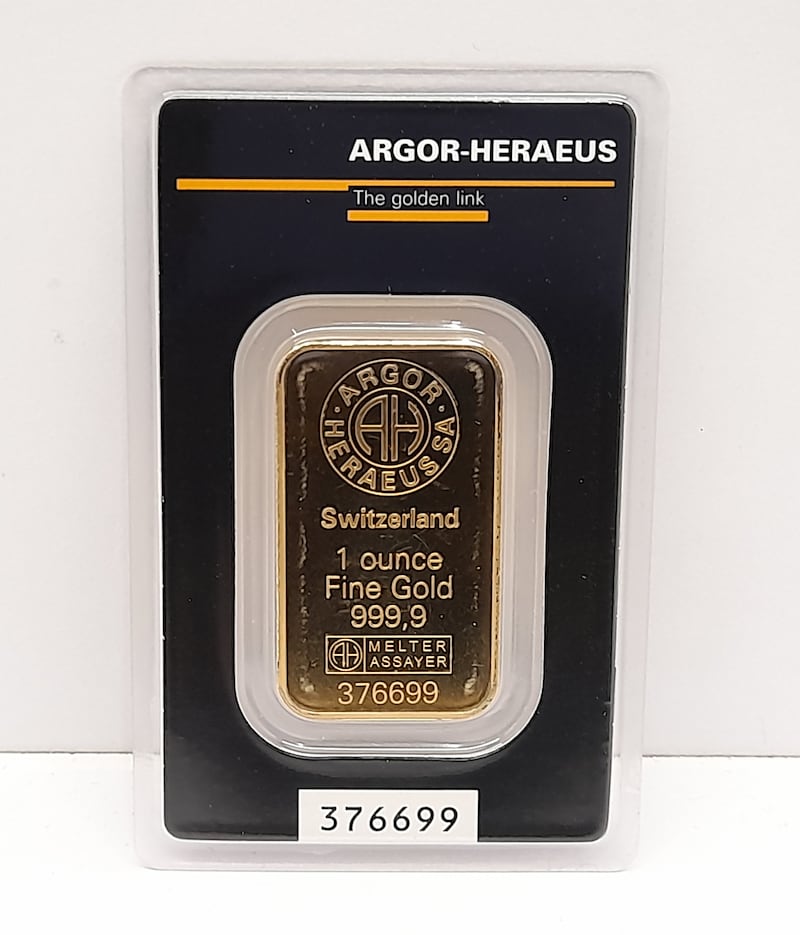The Criminal Assets Bureau (Cab) is currently investigating almost 1,500 people, including 23 based outside the State, with half of the suspects on its files based in Dublin.
Head of the bureau Det Chief Supt Michael Gubbins said while most of the 1,475 targets are involved in the drug trade, others were also engaged in money laundering and organised burglaries.
Mr Gubbins was speaking at the launch of an auction of items seized from gangland criminals, their partners and other family members in recent years. About 100 items are up for auction, including high-value watches such as Rolex and Audemars Piguet. Also going under the hammer are Louis Vuitton and other, designer, handbags as well as gold bars and expensive sunglasses.
The auction, being run by Wilsons Auctions, Dublin, was expected to bring in about €500,000. Mr Gubbins said, based on previous experience, all of the items would likely sell, despite their history.
READ MORE
“In acquiring some of these assets, criminals have created victims and used fear and intimidation to pursue their life of crime and leave behind them a trail of destruction which impacts the community,” he said.

In the first years of the bureau, which was created in 1996 to deny criminals the proceeds of their crimes, cases mostly involved the seizure of cash, money on deposit, jewellery and property.
While those asset types still formed the basis of many cases, Cab was now seizing an increasing volume of luxury branded items. This was because today’s criminals wanted to “flaunt” a “lavish lifestyle” more enthusiastically than their predecessors, the bureau said.
The Cab has trained gardaí nationwide to become assets profilers who, alongside their regular police work, identity suspects in their community who appeared to be living beyond their means. Reports, or assets profiles, were compiled on each suspect and sent to Cab’s office in Dublin for review and investigation.
However, Mr Gubbins said a large volume of high-quality intelligence came from members of the public, through what he termed “good citizens’ reports”. These were mostly anonymous emails, letters, calls and messages through the bureau’s social media accounts.
He said members of the public did not have to supply their names and would never have to give a statement to gardaí or go to court. Instead, “good citizens’ reports” were treated as tip-offs, with 222 received to date this year. He added the information in those reports was often very valuable because local communities were better placed than anyone to know what the criminals in their area were doing.
Mr Gubbins said the properties seized from criminals were offered for sale on the open market, though auctioneers and estate agents. And though many were seized from notorious criminals there was always demand for them, though they normally sold for slightly below the market value for similar properties.
The cash and money on deposit that was seized was transferred straight into State coffers, while the proceeds of the auction and money from property sales would also be realised by the exchequer.
In excess of €2 million was transferred by Cab to State coffers last year, and more than €35 million in the years since Cab’s inception. The bureau also collected €3.9 million in taxes from targets last year, and €160 million in total since 1996. Some €445,000 was recovered from targets deemed to have been overpaid social welfare, with more than €5 million recovered in that way since Cab was established.
- Find The Irish Times on WhatsApp and stay up to date












